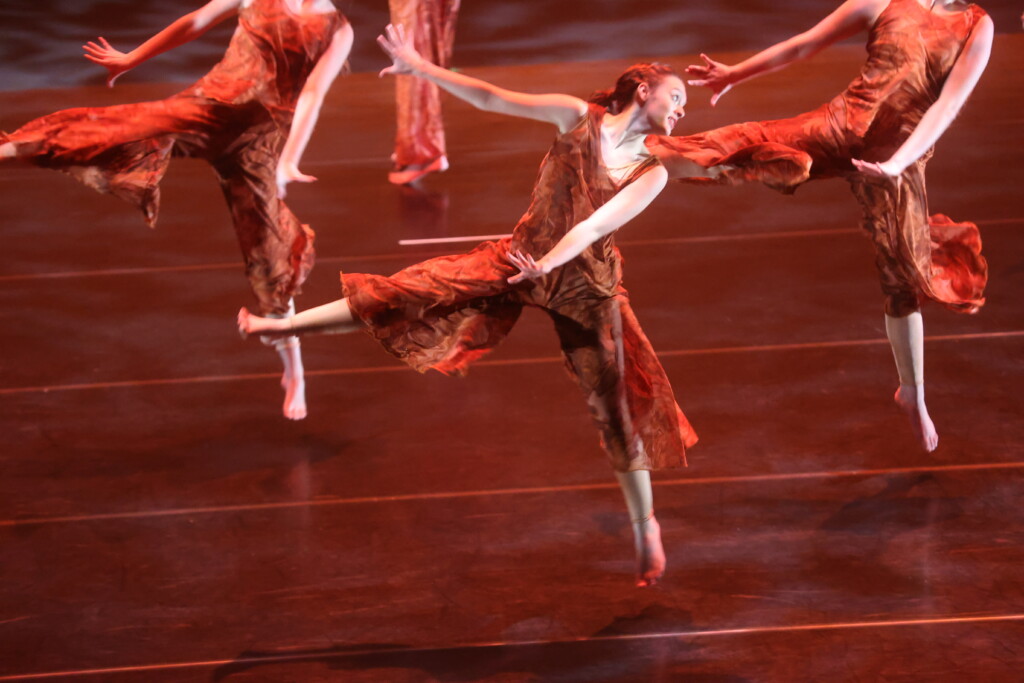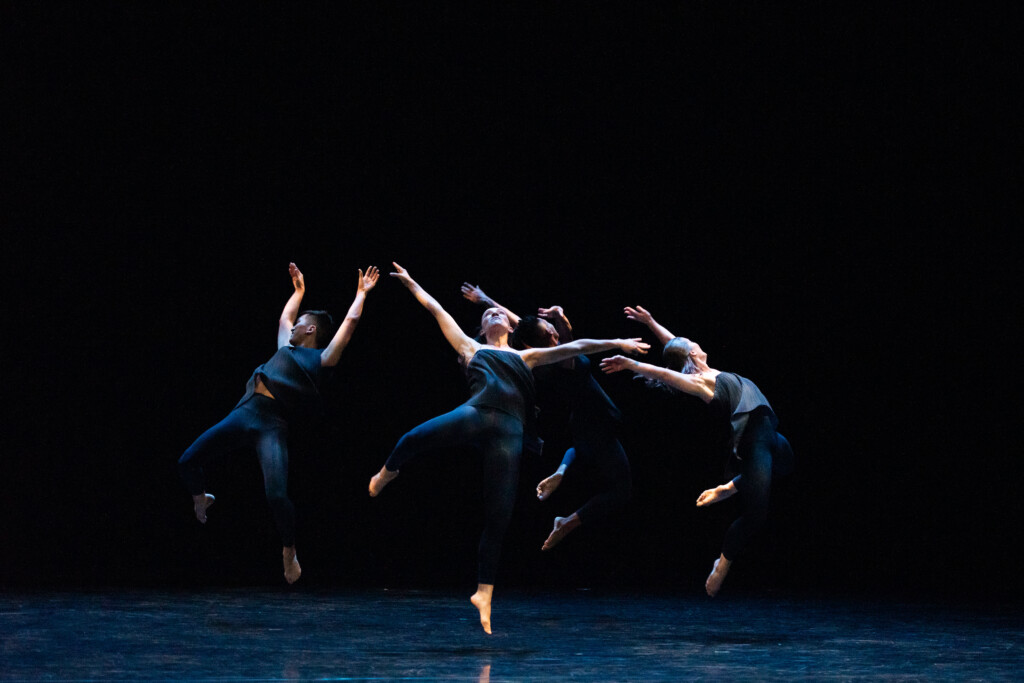Two of Utah’s most prominent historical dance institutions will be among seven dance companies being featured this year at the Utah Arts Festival this year, signifying the enormous place that dance occupies in the area’s performing arts culture: The University of Dance Tanner Dance Program’s Children’s Dance Theatre and Repertory Dance Theatre.
Tanner Children’s Dance Theatre: June 25, Festival Stage 5 p.m.
One of the surest signs that Utah Arts Festival performances are back at full strength is the annual appearance of The University of Utah Tanner Dance Program’s Children’s Dance Theatre.
Mary Ann Lee, artistic director, says more than 200 young dancers will perform on stage as part of this year’s major show of the program, Water and Sand, with an original story written by Julie Hewkin and Tristan Moore and musical score by Moore, CDT’s resident composer.

Water and Sand is timely for how it epitomizes the climate and environmental challenges in a tale that supersedes the usual debate about these issues. Inspired in part by the themes and stories of Moroccan folk literature, the CDT production renders choreographed movement to capture the setting of the Saharan desert, a long drought, and magic. An evil djinn has been released after being imprisoned for a millennium but as access to water continues to diminish, a young nomad hopes to unite the desert communities to find ways of containing the desert from engulfing their homes,
Lee says the story also emanates from research the creative team found about various drought mitigation technologies, including the concept of the underground green line, which are being tested and deployed in North African countries including Morocco, Tunisia, Jordan and Lebanon.
The story’s background draws upon symbolic characters essential to making the children’s take impactful and enlightening in terms of its broader themes. The shadows of a trio of mystic travelers —the Grandmother, the Mother, and the Child—represent signs of hope as they created the oases in the desert for the comfort and benefit of nomads. Meanwhile, the Djinn is irate at the mystic trio’s efforts to make the desert surroundings more hospitable. The Djinn draws her strength from the fact that there is no human activity in the desert, which she prefers to remain as a harsh environment. The trio of Oasis Makers and the Djinn agree to a truce with the Djinn’s promise that she will not expand the desert. But, she breaks her promise, by unleashing the wicked rebellious spirits known as the

Maridim, who upset the arrangement agreed upon by the Oasis Makers and the Djinn. But, the DJinn loses control over the Maridim and the contract is nullified and is transformed into a statue, where she remains imprisoned for the next 1,000 years.
It is then that the story turns to Sabina, the daughter in a nomadic family, and when the statue crumbles and unleashes the Djinn. In Marrakech, all of the fountains and wells have dried up and Sabina goes on a quest for water so that she can grow flowers. She comes into contact with the mystic Oasis Makers, who warn her about the Djinn. The Oasis Makers also recognize Sabira’s green thumb and guide her through the managing and magnifying the possibilities of life in the desert environment, while Sabina confronts the dangers of the Djinn’s presence.
Lee says that Moore and Hewkin were inspired to write the story after a summer trip that took them through Death Valley and the Grand Canyon regions. They initially thought about adapting a small book featuring a Moroccan storyteller, who relates tales in a public market adequate but there was not enough material to translate to a dance and musical production involving the hundreds of students who are part of the program.

In the show, for example, second-grade dancers portray scarabs and flowers. Lee says that kids also have been talking about issues such as the drought and usage of water, demonstrating how the show has become an effective vehicle to incorporate artistic and creative aspects in STEM education.
The show also has been performed in various venues including the Capitol Theatre and in a school tour. In instances where schools were not holding live performances, the CDT show was made available in video format as well as a companion program.
The second oldest performing arts organization in Utah, founded in 1949 by Virginia Tanner, one of Utah’s earliest and most important pioneers for dance education, the company of 280 young dancers, ages 8 through 18, performs for more than 30,000 Utahns annually.
Repertory Dance Theatre: June 26, Festival Stage, 5 p.m.
Appearing in every Utah Arts Festival except one, Repertory Dance Theatre returns this year. Linda Smith, one of the founders and current executive and artistic director, says the festival performance represents in some ways the company’s opening of its next season, which will be the 57th for RDT. Smith recalls the early festivals when barefoot dancers performing on the downtown street pavement would find burns on their soles because of the heat.
Smith says the program the company’s dancers will perform signals the affirmation and joy they have in being able to dance before an audience, after a prolonged absence due to pandemic quarantines and social and physical distancing guidelines. During the pandemic, RDT presented performances and classes either with Zoom or with streaming video on demand. The concerts included a couple of world premieres. But, the 56th season included live performances as well as streaming video options. Smith says dance continues to attract unprecedented numbers of individuals from all experience levels. “As I always say, dance is our greatest resource,” she adds.
For its UAF performance, RDT will present two works from its past season and a preview of a work which will be presented at a November concert in the next season.
One of the works from last season, featuring nine dancers, Lar Lubovitch’s North Star is a stellar delight. Minimalism especially attracted him in its most active period during the 1970s, with Lubovitch leading the way for choreographers to incorporate music of the short-lived minimalism movement during the apex of its popularity, as noted last fall in The Utah Review. Philip Glass wrote the music for North Star in 1977, which became his first film score for a documentary, directed by Barbara Rose and François de Menil, about American sculptor Mark di Suvero. The composer’s score complements various aspects of the sculptor’s aesthetics, including his passion for large assemblages of unconventional materials and found objects as well as his use of diagonals to achieve counterpoint and angular effects. Lubovitch follows a similar general path in translating the Glass score to movement, which, in this case symbolizes celestial bodies — specifically Polaris (North Star), which readily can be located by the prominent group of stars known as the Big Dipper. For night sky observers, Polaris appears near the north celestial pole, the point around which the entire northern sky turns. It is a magnificent little astronomy lesson that has been beautifully interpreted on stage.
The second work from the 56th season is the ebullient Hallelujah Junction by Ishan Rustem, which premiered last November as a commission by RDT. In Hallelujah Junction, the dancers celebrated the roles in which they typically are most comfortable as an ensemble. There are specific commissions where choreographers encapsulate perfectly the spectrum of personalities and artistic strengths of the RDT company of dancers. One example is the 2016 work Theatre by Danielle Agami. Rustem’s creation is definitely another.
As noted last November in The Utah Review, making marvelous use of John Adams music by the same title, Rustem showered the dancers with an immensely pleasing bounty of joyful movement and gestures. The dancers turned the stage into a playground. The rapid-fire succession of solos featuring each of the dancers and then some fantastic moments of coupling were followed by equally exquisite duets. Rustem always dreamed of setting his own choreography to this particular music and RDT dancers were the lucky recipients of this gift. They did not shy away from showing their gratitude in a simply spectacular performance. The work is a perfect selection for the UAF stage.
The ambitious concert will feature Triptych, a 2014 work choreographed by Cherylyn Lavagnino and featuring an original score by composer Scott Killian. Through abstraction, Lavagnino’s choreography references several Christian icons and the distinct qualities of each dancer embody the individual nature of spiritual expression.
For the 57th season, RDT will be joined by two new dance artists: Jacob Lewis, who will be featured as an RDT artist in his first performance with the company during the festival, and Caleb Daly. The forthcoming season also will feature live performance premieres of works from the two most recent winners of the RDT’s Regalia competition, Tyler Schnese and Kaley Pruitt.


